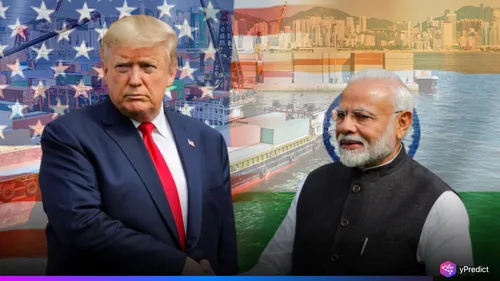
While there have been heightened political tensions surrounding India’s persistence in procuring Russian crude oil, it does not appear that US India trade negotiations are slowing down. On a recent trip to the region, US ex-president Donald Trump gave a warning that the US could potentially leverage penalties against India for further, energy-linked, relations with Moscow. This also reflects some of the ongoing, and precarious, contention of the US-India relationship as both countries evolve their economic cooperation amid geopolitically fueled rivalry.
In our fast-paced and always changing world, both Washington and New Delhi have relied on their economic relationship to create growth, create innovation, and together, push through other systematic and external challenges. Economic partnership often suffers when global conflicts and international sanctions arise that regulate market opportunity. International acceptance of energy imports, and notably importing Russian crude oil, has an almost become a manufactured hot button issue which complicates the question: How much more politically charged can trade endure? Both countries have concluded that their relationship has too much unrealized potential to simply abandon their trade relationship entirely.
At the level of government, there is realistically, an ongoing ongoing opportunity for public leaders to lean into continued economic cooperation, whilst managing the political and geopolitical tensions and disagreements. Economically, the future looks good for continued engagement and hope, and even excitement about the future economic potential.
US Concerns Over Russian Oil Purchases
The US has repeatedly pressured India to cut back on Russian crude imports, deteriorating the already complicated relationship even further during sanctions against Russia’s invasion as they hoped to cut off” funds to Moscow. Trump’s warning, based on India’s text message use of the term “essential,” inserted a sharper edge into the US demand, increasing uncertainty on India within New Delhi. and , in the eyes of India, discounted Russian crude provides a lifeline for energy security and economic stability.
Energy analysts suggest that Indian refiners have made a great deal in price oil as lower prices for consumers help mitigate global inflation. If India were to significantly decrease Russian crude imports it would increase global prices and also undermine economic goals. As a result, the oil issue provides consistent sticking point in US India trade talks – illustrating the ongoing friction in this relationship, while opaque to lay followers.
Why Trade Negotiations Continue Despite Tensions
Even considering these perspectives, both countries have good reasons for remaining open to dialogue. The U.S. considers India a growing market and a potential strategic counterbalance to China, while India considers Washington as providing access to crucial technology, defense hardware, and capital investment.
Business leaders on either side are clear that progress in sectors like digital services, renewable energy and defense industrial production is not able to wait on political rhetorical conflict over oil. This shared foundation helps to clarify why negotiations continue (against the ironic terminology of negotiators each time they revert to the table) even when political rhetoric becomes overheated.
The Importance of Bilateral Trade Relations
In recent years, the value of bilateral trade relations has exceeded the $200 billion mark with trade baskets consisting of technology, pharmaceuticals, and agricultural goods. Renewable energy and digital services increasingly reflect a shared interest in industries that are more future ready. Policymakers are also pointing to the jobs and innovation that can come from considering stronger economic ties. Indian companies have created thousands of jobs in the US while American companies have continued to gain a larger foothold in India. These types of cases add fuel to the fire of keeping trade pathways open no matter what tensions pop-up externally.
Strategic Significance Beyond Economics
The ongoing negotiations for US India trading also illustrate a wider angle of strategic calculation. Both countries want to establish stability in the Indo-Pacific, combat China’s growing influence, and bolster supply chain resiliency. Economic cooperation helps promote these collective security priorities, resulting in trade negotiations being much more than exchanges of goods and services.
This larger prism of respective national interests often encourages both countries to compartmentalize grievances. The importation of Russian crude provides media attention, but the two countries are incentivized enough through an overarching strategic relationship to keep negotiations on track.
Outlook for the Coming Months
Looking forward, experts anticipate trade conversations continuing in sectors like defence technology, digital infrastructure and clean energy. However, the argument in the dispute on Russian crude is likely to remain, which will take consideration to negotiate differences. Policymakers must still find ways to ensure the differences do not obstruct the wider partnership.
For now, the resilience of US India trade talks illustrate that both countries see more to gain by working together than by walking away. Whether they can keep this balance amid increasingly complicated global tensions is to be determined, but this balance will shape the future of their economic and strategic relations.







